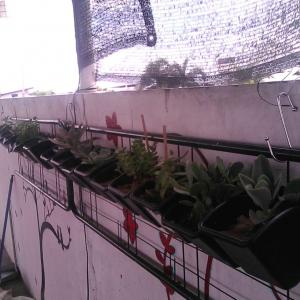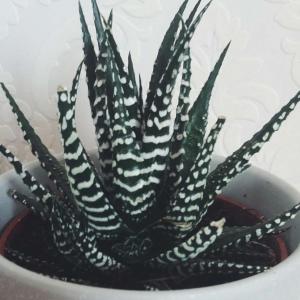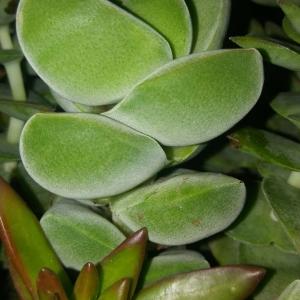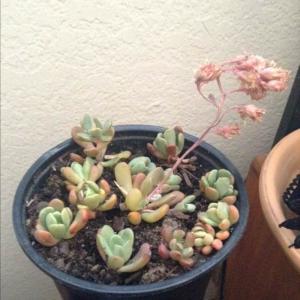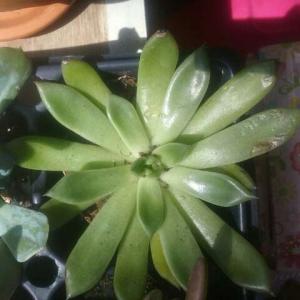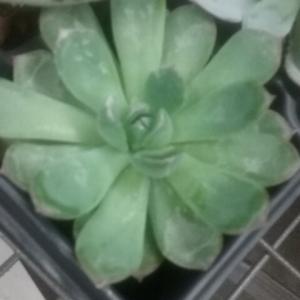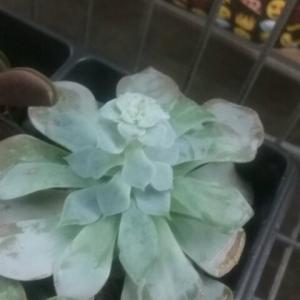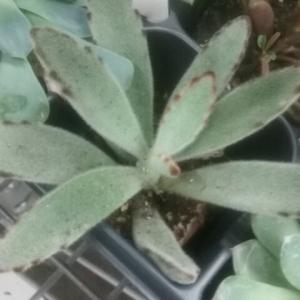成长记
Jayston Wolf
2017年07月23日

I new added a "Haworthia" in my "garden"


2
0
Jayston Wolf:@呀呀呀呀鸭蛋啊 thank you
呀呀呀呀鸭蛋啊:so cute
文章
Dummer. ゛☀
2017年07月22日

Family - Ericaceae
Stems - To +60cm tall, typically some shade of green and without a great deal of bark except at very base, branching, erect to ascending(in young stems), twigs and new growth pubescent to tomentose, stoloniferous, shrubby.

Leaves - Alternate, short-petiolate. Petioles to 2-3mm long, pubescent. Blades elliptic to obovate, short-acute to short-acuminate, glabrous to pubescent and green above, tomentose and glaucous below, to +3cm long, +2cm broad. Margins appearing entire but actually crenulate-serrulate(especially in younger leaves), often reddish at very edge of margin.
Inflorescence - Flowers appearing with the new seasons leaves from terminal and axillary buds. Racemes to 1.5cm long in flower, longer in fruit. Bracts subtending pedicels obovate, to +/-3mm long, with small mucro tip, cupped. Small pair of bractlets on base of pedicel to -3mm long, glabrous, with a few cilia on margins or not, lanceolate, acuminate.
Flowers - Corolla urceolate to cylindric, 5-6mm long, 4mm in diameter, glabrous, white or with some pink, 5-lobed. Lobes recurved, acute, 1.1mm long. Stamens 10, included. Filaments compressed, antrorse pubescent, 2mm long, greenish-white. Anthers copper-colored, 2-lobed, 2mm long. Style green, included, 5mm long, glabrous. Ovary inferior, 2-locular. Calyx tube 1.7mm long, 5-lobed, glabrous, green. Lobes shallow, rounded, light green, 1mm long. Berries globose, glaucous, blue-purple, 5-6mm in diameter, tasty.

Flowering - April - May.
Habitat - Dry rocky open woods, ledges, bluffs, glades, ridges, typically in acid soil.
Origin - Native to U.S.
Other info. - This small, shrubby species is common in the lower 1/2 of Missouri. The plant produces a tasty blueberry in the summer which is enjoyed by wildlife as well as people. The plant is distinguishable from the two other Missouri blueberries by the fact that it is the smaller of the 3 species, it has leaves which are glaucous below, and the stems are typically mostly herbaceous and some shade of green. The other two species of Vaccinium in Missouri become woody very early on in their growth.
A synonym for this species is V. pallidum Ait.
When small and immature, the 3 species of Vaccinium in Missouri can be difficult to differentiate in the field. The best way to tell the species apart is by looking at the leaf venation. The venation of V. arboreum is spaced widely apart. The venation of V. vacillans is spaced fairly close together. The veins of V. stamineum are very close together and sometimes hard to see. In the photo below, the venation of all three species is shown. From left to right the species are V. arboreum, V. stamineum and V. vacillans.
Stems - To +60cm tall, typically some shade of green and without a great deal of bark except at very base, branching, erect to ascending(in young stems), twigs and new growth pubescent to tomentose, stoloniferous, shrubby.

Leaves - Alternate, short-petiolate. Petioles to 2-3mm long, pubescent. Blades elliptic to obovate, short-acute to short-acuminate, glabrous to pubescent and green above, tomentose and glaucous below, to +3cm long, +2cm broad. Margins appearing entire but actually crenulate-serrulate(especially in younger leaves), often reddish at very edge of margin.
Inflorescence - Flowers appearing with the new seasons leaves from terminal and axillary buds. Racemes to 1.5cm long in flower, longer in fruit. Bracts subtending pedicels obovate, to +/-3mm long, with small mucro tip, cupped. Small pair of bractlets on base of pedicel to -3mm long, glabrous, with a few cilia on margins or not, lanceolate, acuminate.
Flowers - Corolla urceolate to cylindric, 5-6mm long, 4mm in diameter, glabrous, white or with some pink, 5-lobed. Lobes recurved, acute, 1.1mm long. Stamens 10, included. Filaments compressed, antrorse pubescent, 2mm long, greenish-white. Anthers copper-colored, 2-lobed, 2mm long. Style green, included, 5mm long, glabrous. Ovary inferior, 2-locular. Calyx tube 1.7mm long, 5-lobed, glabrous, green. Lobes shallow, rounded, light green, 1mm long. Berries globose, glaucous, blue-purple, 5-6mm in diameter, tasty.

Flowering - April - May.
Habitat - Dry rocky open woods, ledges, bluffs, glades, ridges, typically in acid soil.
Origin - Native to U.S.
Other info. - This small, shrubby species is common in the lower 1/2 of Missouri. The plant produces a tasty blueberry in the summer which is enjoyed by wildlife as well as people. The plant is distinguishable from the two other Missouri blueberries by the fact that it is the smaller of the 3 species, it has leaves which are glaucous below, and the stems are typically mostly herbaceous and some shade of green. The other two species of Vaccinium in Missouri become woody very early on in their growth.
A synonym for this species is V. pallidum Ait.

When small and immature, the 3 species of Vaccinium in Missouri can be difficult to differentiate in the field. The best way to tell the species apart is by looking at the leaf venation. The venation of V. arboreum is spaced widely apart. The venation of V. vacillans is spaced fairly close together. The veins of V. stamineum are very close together and sometimes hard to see. In the photo below, the venation of all three species is shown. From left to right the species are V. arboreum, V. stamineum and V. vacillans.
0
0







